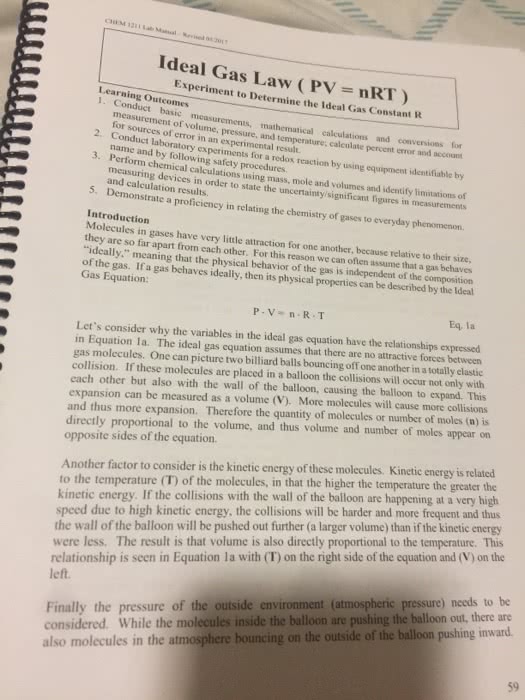CHMA10H3 Chapter Notes - Chapter 5: Oxygen Toxicity, Vapor Pressure, Partial Pressure

36
CHMA10H3 Full Course Notes
Verified Note
36 documents
Document Summary
Microscopic properties of gases: very low density, assume the volume and shape of their container, highly compressible, mix evenly and completely when combined. 4 important properties to consider: pressure, volume, temperature and quantity (moles) These properties are interrelated when one changes, it affects the others. The force (f) associated with an individual collision is given by f=ma, where m is the mass of the particle and a is its acceleration as it changes its direction of travel due to the collision. Pressure exerted by a liquid depends on the height and density of the column of liquid. Pressure force exerted per unit area by gas molecules as they strike the surfaces around them. The sum of all these collisions is pressure a constant force on the surfaces exposed to any gas. The total pressure exerted by a gas depends on several factors: concentration of gas molecules in the sample the higher the concentration, the greater the pressure.


